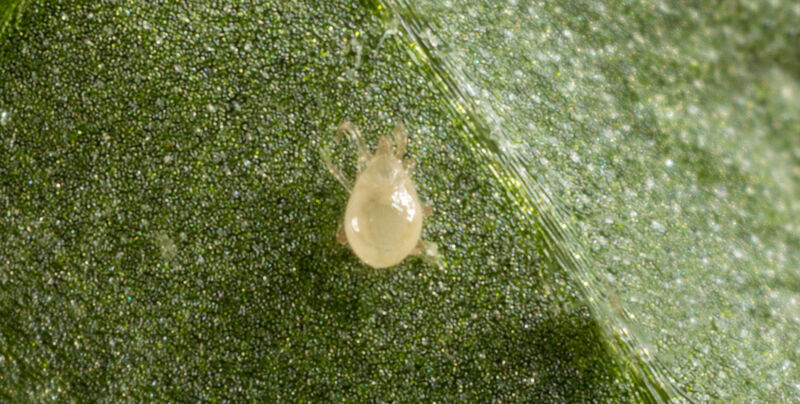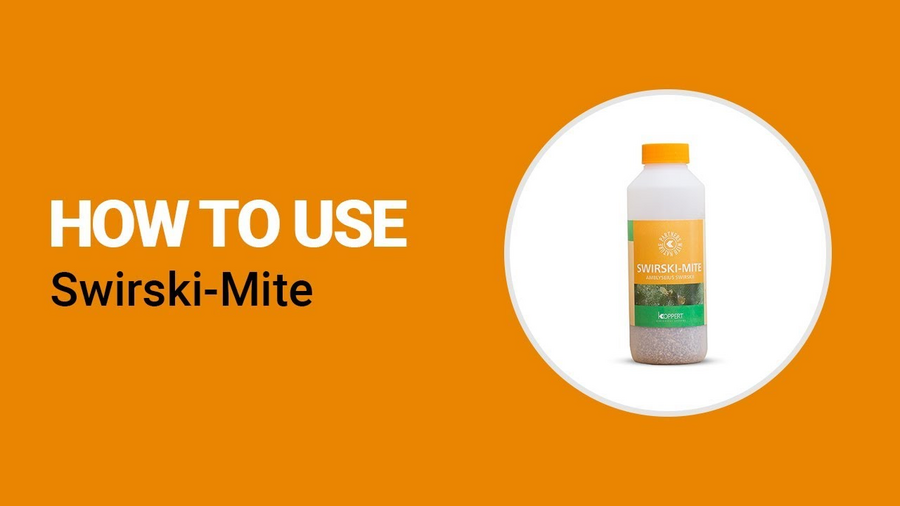The predatory mite Amblyseius swirskii can be used in a wide range of crops, such as fruiting vegetables, soft fruits, and ornamental plants. But there is one crop where the swirskii mite does not feel at home: tomatoes.

Swirski-Mite contains the predatory mite Amblyseius swirskii. This insect is an easy house guest: they are happy to eat almost anything and quickly feel at home in a crop. This is why this predatory mite is perfect for use with most fruiting vegetables, strawberries and other soft fruits, cut flowers (such as roses and chrysanthemums), and potted plants.
Yet, it does have a few preferences. To begin with, swirskii does not like extreme cold. You can store it for a short time at 10-15 °C/50-59°F, but the eggs will not hatch. To ensure good development, the daytime temperature should regularly exceed 20-22 °C/68-71.6°F (but it does even better at 25-30 °C/77-86°F). Although it still develops up to 36 °C/96.8°F, it does not do well at higher temperatures.
Not only does temperature play a role, but the humidity should not be too low either. Otherwise the eggs will no longer hatch. More specifically, the humidity is particularly important in the zone where the insects live, which is directly around the leaf. The microclimate there is often very different from that found elsewhere in the crop.
The combination of all these characteristics means that the mite truly thrives in greenhouse crops. However, in warmer regions and during the summer in temperate regions, release in outdoor crops can also be effective.
The swirskii predatory mite is anything but shy and is therefore suitable for many crops. But there is one important exception: swirskii will have nothing to do with tomatoes. This crop protects itself against pests with sticky hairs, which make no distinction between beneficial and harmful insects. Swirskii and most other mites, both useful and harmful, get stuck in them. The crop's glandular hairs form a physical barrier and are also covered with a sticky substance.
This means that tomato growers must use larger natural enemies against whitefly and thrips – ones that can literally fly or step over those hairs – such as parasitic wasps and predatory bugs.
